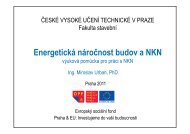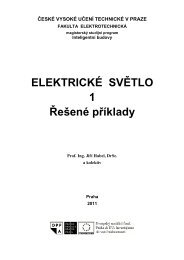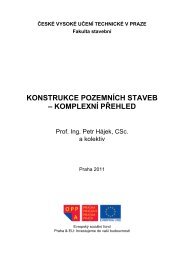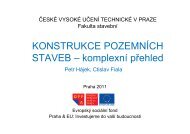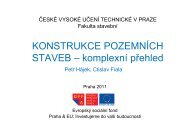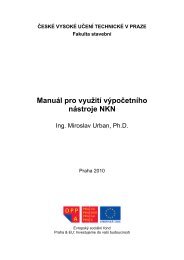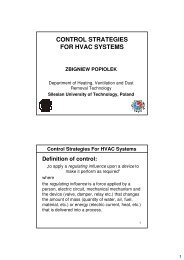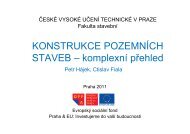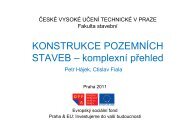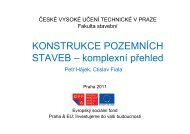Buses, Protocols and Systems for Home and Building Automation
Buses, Protocols and Systems for Home and Building Automation
Buses, Protocols and Systems for Home and Building Automation
Create successful ePaper yourself
Turn your PDF publications into a flip-book with our unique Google optimized e-Paper software.
Evropský sociální fond. Praha & EU: Investujeme do vaší budoucnosti.<br />
in the above described hierarchical model (Fig. 3.1 <strong>and</strong> Fig. 3.2). This orientation is used<br />
mainly in non-residence buildings (BMS).<br />
The BACnet is an example of a completely non-proprietary object-oriented system. That<br />
means that there are no proprietary special chips needed (in opposite to LonTalk). On the<br />
two lowest levels of the ISO/OSI model, the protocol is very flexible, because we can<br />
presently choose from a very incompatible group of data link/physical layers including (Fig.<br />
3.1.1.2) ARCNET, Ethernet, BACnet/IP, Point-To-Point over RS-232, Master-Slave/Token-<br />
Passing over RS-485, LonTalk or KNX-IP.<br />
Fig. 3.1.1.2: BACnet protocol layers <strong>and</strong> equivalent ISO/OSI Layers (11)<br />
The in<strong>for</strong>mation exchange between devices over the BACnet is basically based on objects<br />
<strong>and</strong> services. Today, there exist 49 st<strong>and</strong>ard objects in the BACnet <strong>and</strong> every unit consists of<br />
at least one object – <strong>for</strong> example:<br />
- Device (m<strong>and</strong>atory <strong>for</strong> every BACnet device)<br />
- Analog input/output/value<br />
- Binary input/output/value<br />
- Schedule<br />
- Calendar<br />
- Program<br />
- File<br />
- Access Door<br />
- …<br />
Every object has some common properties like identifier, name or type <strong>and</strong> some special<br />
properties dependent on the type of the object. In the protocol, there are more than one<br />
hundred properties defined. Properties can be accessed, read or written by calling special<br />
services. The services (in total more than 30) are not made only <strong>for</strong> accessing the properties,<br />
in general, they can be described as follows: “Services are the means by which one BACnet<br />
device acquires in<strong>for</strong>mation from another device, comm<strong>and</strong>s another device to per<strong>for</strong>m some<br />
actions, or announces to one or more devices that some event has taken place. Each service<br />
request issued <strong>and</strong> service acknowledgment (reply) returned becomes a message packet<br />
transferred over the network from the sending to the receiving device.” (12)<br />
All these facts show us that besides traditional tasks of small <strong>and</strong> medium building<br />
automation (HVAC <strong>and</strong> light control), BACnet is able to take care about tasks of BMS <strong>and</strong><br />
complex building systems (e.g. security <strong>and</strong> fire safety systems, access control systems,<br />
vertical transport systems, elevator control, maintenance or waste management). Another<br />
Ondřej Nývlt - <strong>Buses</strong>, <strong>Protocols</strong> <strong>and</strong> <strong>Systems</strong> <strong>for</strong> <strong>Home</strong> <strong>and</strong> <strong>Building</strong> <strong>Automation</strong> 13




